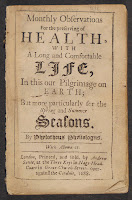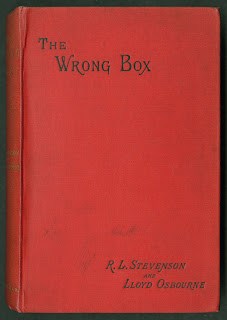 In the face of our ever-growing obsession with youth, it is good to know that the quest we are on is not new. The study of longevity is an old one, and here at Rauner we have a wonderful collection of books devoted to its exploration. Our "Longevity Collection" came to us as a gift from Mrs. Raymond Pearl in memory of her husband who graduated from Dartmouth College in 1899. Raymond Pearl, a renowned biologist and statistician, who is considered to be the father of biogerontology, collected over 330 books and 440 pamphlets on the subject. Titles include The Art of Prolonging Human Life, by Christopher WM. Hufeland, MD, first physician to the King of Prussia (1829), The Dying Speeches and Behavior of the Several State Prisoners That have been Executed the last 300 Years (1720) and a three volume collection by G. Smeeten entitled Remarkable Aged Persons. Smeeten, a publisher, painstakingly hand-recorded most of the entries in these scrapbook-like bound volumes. The information he provides consists of birth and death dates, character sketches and causes of death. Newspaper clippings of obituaries, sketches and articles, as well as drawings related to longevity, supplement the entries.
In the face of our ever-growing obsession with youth, it is good to know that the quest we are on is not new. The study of longevity is an old one, and here at Rauner we have a wonderful collection of books devoted to its exploration. Our "Longevity Collection" came to us as a gift from Mrs. Raymond Pearl in memory of her husband who graduated from Dartmouth College in 1899. Raymond Pearl, a renowned biologist and statistician, who is considered to be the father of biogerontology, collected over 330 books and 440 pamphlets on the subject. Titles include The Art of Prolonging Human Life, by Christopher WM. Hufeland, MD, first physician to the King of Prussia (1829), The Dying Speeches and Behavior of the Several State Prisoners That have been Executed the last 300 Years (1720) and a three volume collection by G. Smeeten entitled Remarkable Aged Persons. Smeeten, a publisher, painstakingly hand-recorded most of the entries in these scrapbook-like bound volumes. The information he provides consists of birth and death dates, character sketches and causes of death. Newspaper clippings of obituaries, sketches and articles, as well as drawings related to longevity, supplement the entries. Several of the texts in the "Longevity Collection" date back to the 1600s while the oldest, De Triplici Vita, by Marsilio Ficino, was probably published in 1490. Many of the early texts are in Latin, but volumes in Italian, German and French are also represented. Philosophical treatise on the subject of longevity, aging and death predominate this collection. However, a variety of clinical texts are also included.
Despite his vast knowledge and research on the subject, Raymond Pearl was not able to prolong his own life. He died at the age of 61 of heart failure.
Search the catalog to see all of the volumes in the Longevity Collection. The volumes shown here can be requested by asking for Rauner Longevity QP 85 .R453 (Remarkable Aged Persons), Rauner Longevity RA 775 .H9 1829 (The Art of Prolonging Human Life), Rauner Longevity RA 775 .T87 (Monthly Observations) and Rauner Longevity HV 6295 .G7 D8 (The Dying Speeches and Behaviour).




